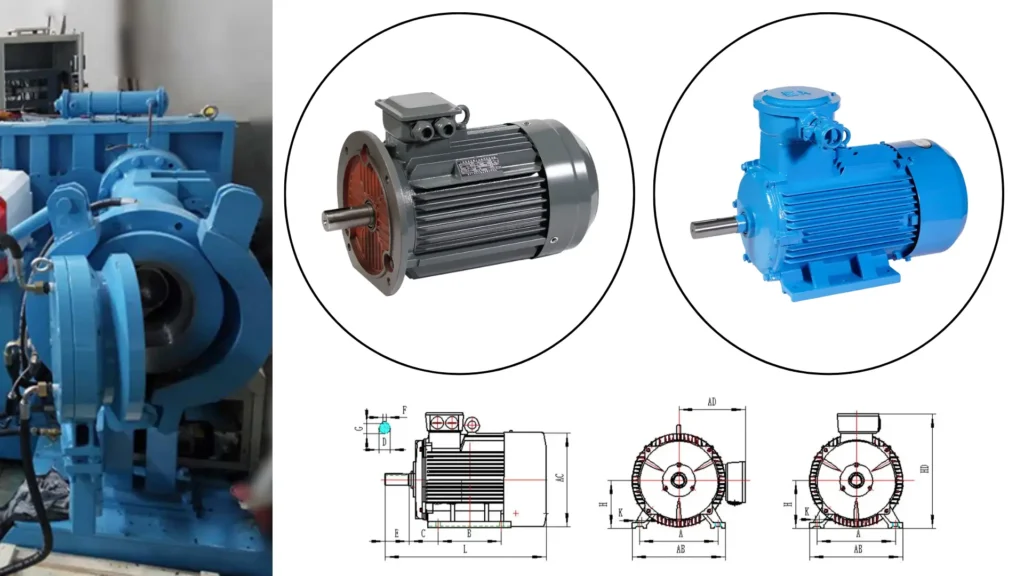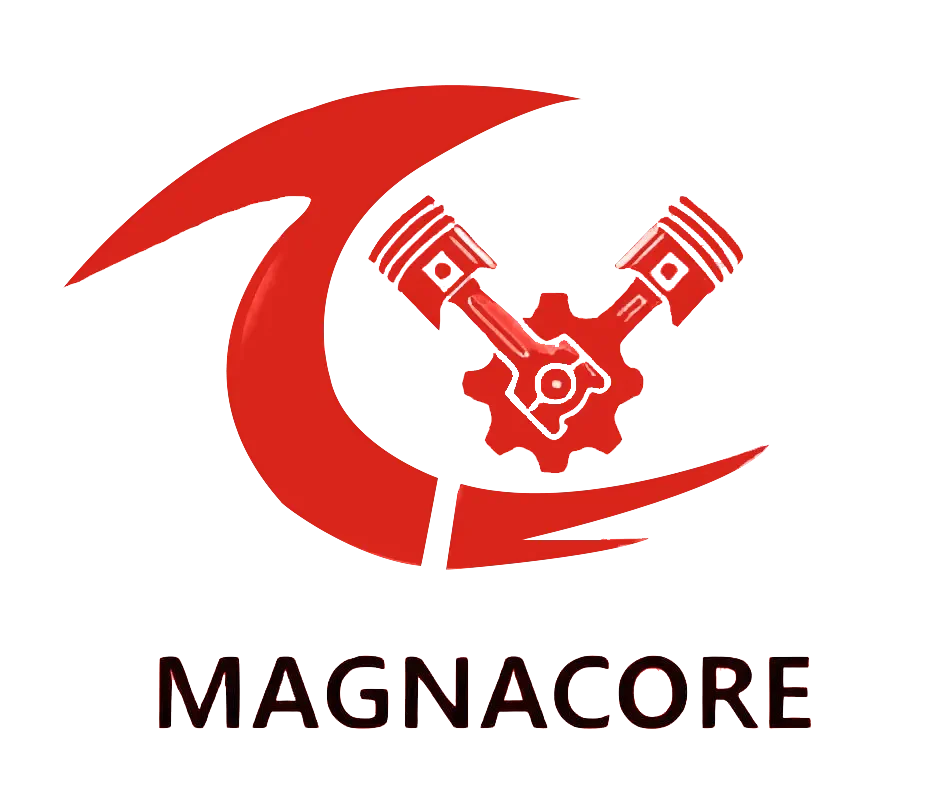The marine industry is undergoing a quiet revolution as shipbuilders and operators increasingly adopt corrosion-resistant rare earth motors.
These advanced propulsion systems combine the power of rare earth magnets with specialized protective technologies to deliver unmatched performance in harsh marine environments.
This article explains why these motors are becoming the preferred choice for modern vessels.
Why Are Traditional Marine Motors Falling Short?
Vulnerability to Saltwater Corrosion
Standard marine motors suffer rapid deterioration when exposed to saltwater spray and humid ocean air, with critical components often rusting within months of operation.
Electrical contacts and bearings are particularly susceptible to salt-induced pitting and galvanic corrosion.
This corrosion leads to increased electrical resistance and mechanical wear, significantly shortening motor lifespan. Many traditional motors require complete replacement after just 3-5 years in marine service.

Excessive Maintenance Requirements
Conventional marine motors demand monthly inspections and quarterly servicing to maintain reliable operation in harsh conditions.
Brush replacements and commutator resurfacing become frequent necessities due to salt contamination.
Cooling system components require regular flushing to remove salt deposits and marine growth.
These intensive maintenance routines result in substantial vessel downtime and crew labor costs that impact operational efficiency.
Bulkier Designs with Lower Efficiency
Older marine motor technologies rely on oversized components to compensate for corrosion and wear, resulting in heavy, space-consuming units.
Their inefficient electromagnetic designs waste 20-30% of input energy as heat rather than useful mechanical power. The added weight negatively impacts vessel performance and fuel economy.
These outdated designs also lack the smart control capabilities of modern systems, preventing energy optimization during variable load conditions.
What Makes Rare Earth Motors Ideal for Marine Applications?
Superior Corrosion Resistance
Rare earth motors feature marine-grade stainless steel housings with protective coatings that withstand constant saltwater exposure.
Critical internal components are either hermetically sealed or made from corrosion-resistant materials like titanium and nickel alloys.
The permanent magnet design eliminates vulnerable rotor windings that typically fail in conventional motors.
These features combine to provide 3-5 times longer service life in marine environments compared to traditional motors.
Higher Power-to-Weight Ratio
The exceptional magnetic strength of rare earth materials allows these motors to produce up to 50% more torque from the same physical size as conventional units.
This compact power enables vessel designers to save valuable space and weight in propulsion systems.
The reduced weight contributes directly to improved fuel efficiency and payload capacity. Some modern rare earth marine motors achieve power densities exceeding 5 kW per kilogram.

Reduced Energy Consumption
Rare earth motors typically operate at 90-95% efficiency compared to 75-85% for conventional marine motors.
This efficiency gain translates to 15-25% lower fuel consumption for equivalent power output. The improved energy conversion also reduces heat generation, decreasing cooling system demands.
Over a typical vessel’s 20-year lifespan, these savings can amount to hundreds of thousands of dollars in fuel costs.
Also Read:
Top 10 Permanent Magnet Motor Manufacturers in Singapore
How Do These Motors Withstand Harsh Marine Environments?
Advanced Sealing Technologies
Military-grade IP68 and IP69K sealing standards ensure complete protection against water intrusion, even at significant depths.
Multiple redundant sealing barriers protect critical components from both saltwater and humidity. Special pressure-equalization systems prevent condensation buildup inside the motor housing.
These sealing technologies have been proven effective in the most demanding offshore and naval applications.
Corrosion-Resistant Materials
Housings utilize 316L marine-grade stainless steel with additional protective coatings like nickel plating or ceramic composites.
Shafts are manufactured from precipitation-hardened stainless steels or titanium alloys for maximum corrosion resistance.
All fasteners and hardware are made from super duplex stainless steels to prevent galvanic corrosion.
Even internal wiring features silver-plated conductors with fluoropolymer insulation for maximum protection.
Self-Lubricating Bearings
Advanced polymer-composite bearings incorporate solid lubricants that provide continuous lubrication without oil or grease.
Ceramic hybrid bearings resist saltwater penetration while maintaining smooth operation. Some designs use magnetic bearings that eliminate physical contact entirely.
These maintenance-free solutions are particularly valuable for thrusters and other hard-to-access underwater propulsion units.

What Performance Benefits Do They Offer?
Consistent Power Delivery
Rare earth marine motors maintain full torque output even in extreme conditions from Arctic cold to tropical heat.
Their advanced thermal management systems prevent power derating that plagues conventional motors in high-temperature environments.
The permanent magnet design ensures stable performance regardless of voltage fluctuations common in marine electrical systems. This reliability is crucial for critical operations like storm avoidance or emergency maneuvers.
Quick Response Times
These motors achieve full torque almost instantly, with acceleration rates 3-5 times faster than traditional marine motors.
The precise speed control enables millimeter-accurate positioning for dynamic positioning (DP) systems. Instant reversibility allows for rapid stopping and directional changes essential for docking operations.
Such responsiveness significantly enhances vessel safety and operational capabilities in congested ports or rough seas.
Extended Service Life
With proper maintenance, rare earth marine motors typically last 25,000-50,000 operating hours – double or triple conventional motor lifespans.
Their brushless design eliminates the #1 failure point in traditional marine motors.
Corrosion-resistant materials prevent the gradual performance degradation seen in standard units.
This longevity makes them particularly valuable for applications where motor replacement is difficult or expensive.
And More:
- The Benefits of PMSM: Transforming Efficiency in Electric Motor Technology
- Benefits of Permanent Magnet Motors
- Color Custom PMSM Motors in China
Which Marine Applications Benefit Most?
Commercial Shipping Propulsion
Rare earth motors are revolutionizing thruster and azipod systems in container ships and tankers.
Their efficiency gains are particularly valuable for slow-steaming operations to reduce fuel costs.
The reliability reduces port turnaround times by minimizing propulsion system failures. Some newbuild vessels are adopting full electric propulsion with rare earth motor technology.

Offshore Support Vessels
Dynamic positioning systems benefit enormously from the precise control and instant response of rare earth motors.
Their compact size allows for more flexible thruster arrangements on crowded decks.
The maintenance-free operation is ideal for vessels spending extended periods at sea. Fuel savings are especially significant for standby vessels that spend long periods in station-keeping mode.
Naval and Defense Applications
The quiet operation of rare earth motors reduces acoustic signatures critical for stealth operations.
Their electromagnetic compatibility makes them ideal for sensitive electronic warfare environments.
The reliability ensures mission readiness with fewer mechanical failures. Some navies are adopting them for next-generation all-electric warship designs.
Luxury Yachts and Cruisers
Vibration-free operation enhances passenger comfort and reduces noise pollution.
The space savings allow for more creative interior designs and increased living space.
Energy efficiency supports longer range or more hotel load capacity. Many superyacht builders now specify rare earth motors as standard for their quiet, clean operation.
How Do They Compare to Conventional Marine Motors?
Lower Total Cost of Ownership
While initial costs are 20-30% higher, rare earth motors typically pay back the difference within 3-5 years through fuel and maintenance savings.
Their longer lifespan means fewer replacements over a vessel’s service life.
Reduced downtime translates to higher revenue-earning potential. Many operators report 40-60% lower operating costs over 10 years.

Reduced Downtime
The simplified design with fewer wearing parts cuts maintenance requirements by up to 80%.
On-condition maintenance replaces scheduled overhauls, maximizing operational availability.
Quick module replacement designs minimize repair times when service is needed. This reliability is transforming operational planning for many fleet operators.
Environmental Benefits
The efficiency gains directly reduce CO2 emissions by 15-25% compared to conventional motors.
Lower fuel consumption means fewer harmful particulates and NOx emissions. The absence of lubricant leaks protects marine ecosystems.
These benefits help operators meet increasingly stringent environmental regulations and ESG goals.
What Should Buyers Consider Before Switching?
Proper Sizing for Specific Applications
Vessel operators should conduct a detailed power audit to determine exact torque and speed requirements for their specific operations.
The unique hull characteristics and typical load profiles must be analyzed to select optimal motor sizing.
Oversizing can lead to unnecessary weight and cost, while undersizing risks premature failure.
Many manufacturers offer application engineering support to help match motor specifications to vessel requirements.
Compatibility with Existing Systems
Electrical systems must be evaluated for voltage compatibility and harmonic distortion tolerance with the new motors.
Control interfaces may need upgrading to support modern digital communication protocols.
Mechanical mounting arrangements and shaft couplings often require adaptation for the new motor footprint.
A complete systems integration review should precede any purchase decision.

Certification Requirements
Motors must carry appropriate marine certifications such as ABS, DNV, or Lloyd’s Register approval.
Compliance with international standards like IMO Tier III emissions regulations may be required.
Electrical safety certifications (ATEX for hazardous areas) must match the intended installation environment. Documentation packages should be verified for completeness before installation.
Are There Any Special Maintenance Advantages?
Extended Service Intervals
Advanced bearing technologies and sealed designs enable maintenance periods up to 5 times longer than conventional motors.
Many rare earth marine motors only require annual inspections under normal operating conditions.
The elimination of brushes and commutators removes several routine maintenance tasks entirely.
This dramatically reduces lifecycle maintenance costs and vessel downtime.
Easier Diagnostics
Integrated sensors provide real-time data on temperature, vibration, and electrical parameters through standard marine communication networks.
Cloud-based monitoring platforms enable shore-based engineers to assess motor health remotely.
Predictive algorithms can identify developing issues weeks before they cause operational impacts. Simplified diagnostic procedures reduce the need for specialized technicians onboard.
Modular Replacement Options
Critical components like bearings and seals are designed for individual replacement without full motor disassembly.
Wound components are often potted in easily replaceable modules rather than being permanently installed.
This modularity minimizes spare parts inventory requirements. Many repairs can be completed dockside rather than requiring drydock time.
What Does the Future Hold for Marine Motors?
Integration with Hybrid Systems
Next-generation motors will feature built-in power electronics for seamless hybrid operation.
Intelligent energy management systems will automatically optimize power sources between batteries, generators, and shore power.
Some designs will incorporate regenerative capabilities to recover energy during deceleration. These advancements will be crucial for meeting upcoming emissions regulations.
Smart Monitoring Capabilities
Future motors will embed AI processors that continuously analyze performance patterns.
Wireless sensors will enable condition monitoring of previously inaccessible components. Digital twin technology will allow virtual testing of maintenance procedures.
These capabilities will enable true predictive maintenance strategies across entire fleets.
Improved Recycling Processes
New magnet recycling technologies are recovering over 95% of rare earth materials from end-of-life motors.
Standardized designs are being developed to simplify disassembly and material separation.
Some manufacturers are implementing take-back programs to ensure responsible end-of-life processing. These initiatives address concerns about rare earth material sustainability.

Conclusion
The marine industry’s shift to corrosion-resistant rare earth motors represents more than just an equipment upgrade – it’s a fundamental improvement in how vessels are powered.
By combining rugged durability with exceptional efficiency, these advanced motors are helping ship operators reduce costs, improve reliability, and meet increasingly stringent environmental regulations.
As the technology continues to evolve, rare earth motors are set to become the new standard for marine propulsion across all vessel classes.

